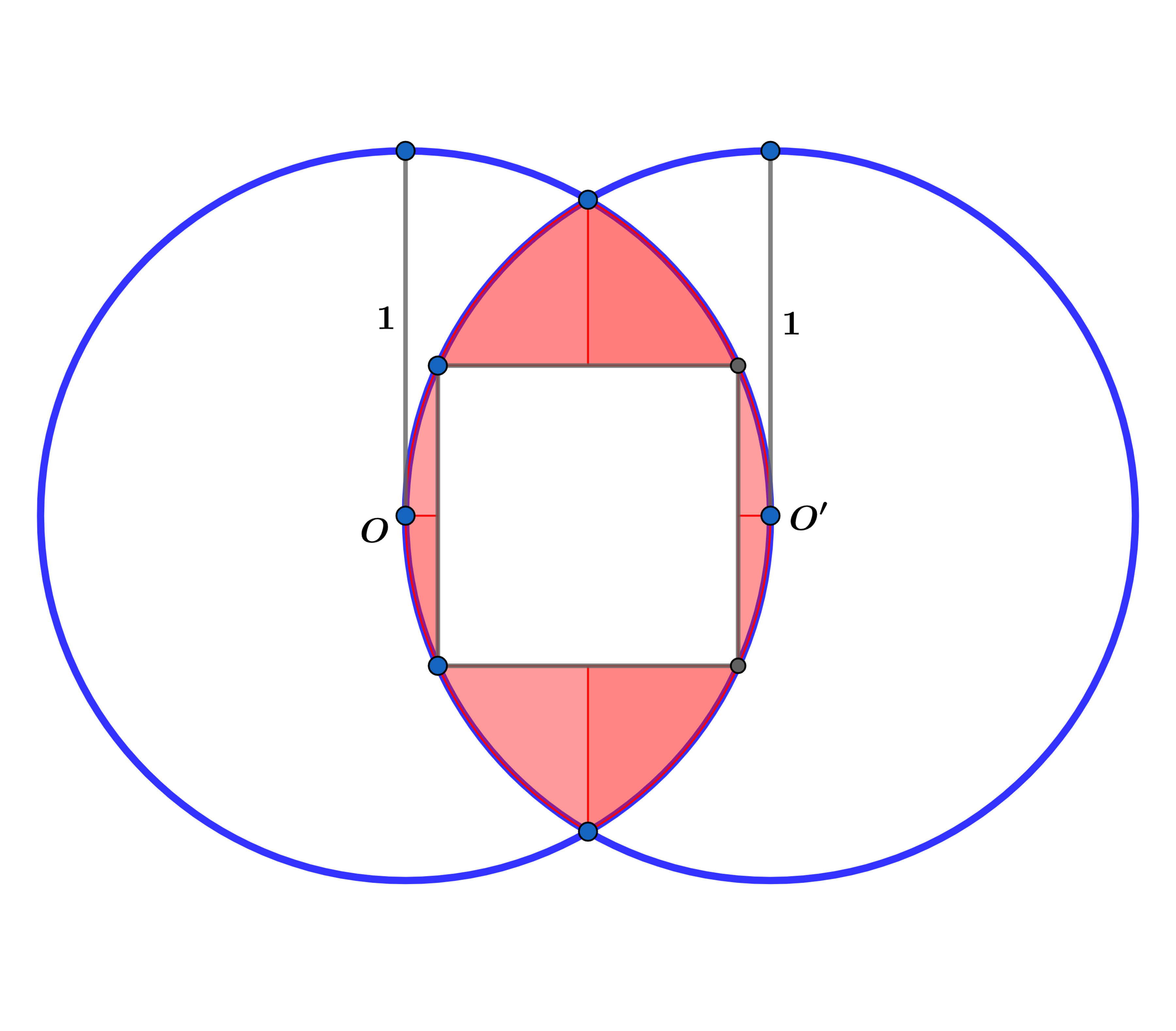Areas, Circles and Squares!

A square is inscribed in the two intersecting unit circles with centers and as shown above.
If the area of the red region can be expressed as , where and are coprime positive integers, find .
The answer is 20.
This section requires Javascript.
You are seeing this because something didn't load right. We suggest you, (a) try
refreshing the page, (b) enabling javascript if it is disabled on your browser and,
finally, (c)
loading the
non-javascript version of this page
. We're sorry about the hassle.
R ( 2 1 − a , 2 a ) is on the circle ( x − 1 ) 2 + y 2 = 1 ⟹ 2 a 2 + 2 a − 3 = 0 ⟹
a = 2 7 − 1 dropping the negative root.
⟹ the area of the square A s = ( 2 7 − 1 ) 2 = 2 4 − 7
Solving x 2 + y 2 = 1 and x 2 − 2 x + 1 + y 2 = 1 ⟹ 2 x − 1 = 0 ⟹ x = 2 1 ⟹ y = ± 2 3 ⟹
The point of intersection of the two circles is ( 2 1 , ± 2 3 ) ⟹ the base, height and m ∠ S O T of △ S O T are
S T = 3 , h e i g h t = 2 1 and m ∠ S O T = 3 2 π ⟹ A △ S O T = 4 3
and
A s e c t o r S O T = 2 1 ( 3 2 π ) = 3 π ⟹ The area of the region between the two circles is
I = 2 ( A s e c t o r S O T − A △ S O T ) = 6 4 π − 3 3 ⟹ the desired area is A d = I − A s =
6 4 π − 3 3 − 1 2 + 3 7 = 6 4 ( π − 3 ) + 3 ( 7 − 3 ) = d a ( π − b ) + b ( c − b )
⟹ a + b + c + d = 2 0 .